FOD Tips from the NTSB
An AA-5B prop plane brought down by paint chips? If you’re an aircraft mechanic, read this Safety Alert from the National Transportation Safety Board. Includes recommended practice for controlling FOD during MRO activities, a collection of failure examples and a list of informative links.
Image: Shop rags in compressor case. Source: NTSB.gov
Video: Medical Cleanroom
Take a walk through Brentwood Industry’s 12,000 square foot ISO Class 7 cleanroom at its Reading, Pennsylvania manufacturing plant, with custom thermoforming, injection molding, airlock entrance to maintain air pressurization, dedicated gowning room, and a segregated material loading bay.
Image Source: YouTube (screenshot)
Wet Pavement Safety
Don’t you just hate it when your airliner skids across a rain-soaked runway and into the nearest control tower? Starting in October, the Federal Aviation Administration will require that federally-obligated airports use the new TALPA procedures to assess the safety of runways that are not dry. Review these online resources for improving air operations during inclement weather.
Image Source: Federal Aviation Administration
Great Flocks of Drones?
The United Kingdom is confronting a surge in unmanned aerial vehicles (UAV’s), which nearly collided with manned aircraft more often in the first six months of 2016 than during all of 2015. British authorities are trying to assess the potential dangers of a drone strike, as compared to the more common bird strike.
Image Source: Wikimedia Commons
New! FOD Bags Available Online
OK, you’ve dutifully picked some FOD off the ground. Now what do you do with it? These rugged FOD Bags offer a flexible, portable and lightweight place to store found debris for later disposal.
Image Source: The FOD Control Corporation

















 It may be the tail end of the holiday season, but don’t expect Santa to shove a wad of extra cash into your airport’s FOD control budget.
It may be the tail end of the holiday season, but don’t expect Santa to shove a wad of extra cash into your airport’s FOD control budget.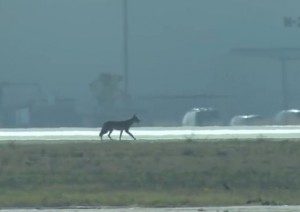 Our grandparents used to think of coyotes as reclusive creatures wandering the western deserts and woodlands. Not any more.
Our grandparents used to think of coyotes as reclusive creatures wandering the western deserts and woodlands. Not any more.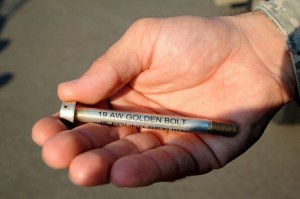 Keeping your employees on the lookout for foreign object debris or damage (FOD) can prove challenging in a busy work environment. Try these three proven methods to encourage awareness and a strong safety culture.
Keeping your employees on the lookout for foreign object debris or damage (FOD) can prove challenging in a busy work environment. Try these three proven methods to encourage awareness and a strong safety culture.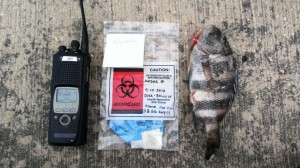 September 10, 2013, will forever live in infamy for Lt. Cmdr. Nick Toth, NOAA pilot, and for everyone else involved in the first recorded “fish strike,” in the history of NOAA at MacDill that occurred that morning.
September 10, 2013, will forever live in infamy for Lt. Cmdr. Nick Toth, NOAA pilot, and for everyone else involved in the first recorded “fish strike,” in the history of NOAA at MacDill that occurred that morning.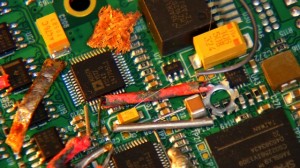 IPC has released a new program that focuses exclusively on FOD Prevention in Electronics Assembly.
IPC has released a new program that focuses exclusively on FOD Prevention in Electronics Assembly.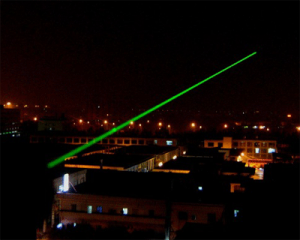
 An explosive engine failure on a Vietnamese airliner showered fiery debris across a runway at Australia’s second busiest airport Tuesday, bringing all traffic at the airport to a standstill.
An explosive engine failure on a Vietnamese airliner showered fiery debris across a runway at Australia’s second busiest airport Tuesday, bringing all traffic at the airport to a standstill.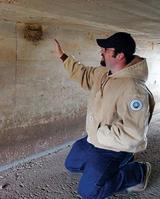 Aaron Betts is a wildlife biologist with the U.S. Department of Agriculture, assigned to oversee the Bird/Wildlife Aircraft Strike Hazard program at Vance Air Force Base and at Kegelman Air Force Auxiliary Field.
Aaron Betts is a wildlife biologist with the U.S. Department of Agriculture, assigned to oversee the Bird/Wildlife Aircraft Strike Hazard program at Vance Air Force Base and at Kegelman Air Force Auxiliary Field. Foreign Objects in food constitute one of the most serious causes of consumer complaints and can result in substantial losses and brand damage to companies associated with the incidents. While some of these complaints are justified and the objects behind them can be considered as true foreign bodies, others may be due to poorly mixed or misprocessed product. Additionally, it is common for the foreign body to have been introduced into the product by the customers themselves, either accidentally, through home contamination or, more concerningly, as a result of malicious contamination, whether by the complainant or by someone involved in food manufacture or distribution. Nevertheless, when complaints are received, it is important to be able to identify the nature and origin of the object both quickly and cost-effectively, so that an appropriate response can be made. This is particularly so in the age of social networking, where complainants can readily publicize their dissatisfaction.
Foreign Objects in food constitute one of the most serious causes of consumer complaints and can result in substantial losses and brand damage to companies associated with the incidents. While some of these complaints are justified and the objects behind them can be considered as true foreign bodies, others may be due to poorly mixed or misprocessed product. Additionally, it is common for the foreign body to have been introduced into the product by the customers themselves, either accidentally, through home contamination or, more concerningly, as a result of malicious contamination, whether by the complainant or by someone involved in food manufacture or distribution. Nevertheless, when complaints are received, it is important to be able to identify the nature and origin of the object both quickly and cost-effectively, so that an appropriate response can be made. This is particularly so in the age of social networking, where complainants can readily publicize their dissatisfaction.

 Laser pointers being directed into the cockpits of aircraft are becoming an increasing hazard for pilots as these powerful handheld lasers become more affordable and widespread. There were 3,960 such strikes reported last year, the FAA says. That’s up from 283 in 2005.
Laser pointers being directed into the cockpits of aircraft are becoming an increasing hazard for pilots as these powerful handheld lasers become more affordable and widespread. There were 3,960 such strikes reported last year, the FAA says. That’s up from 283 in 2005.

